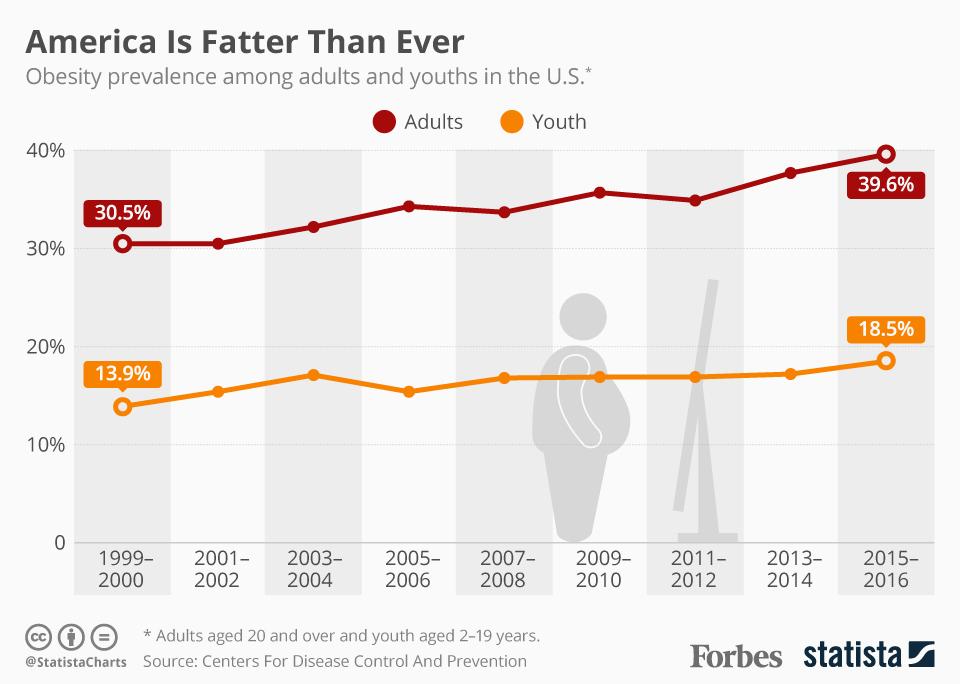 In the past few years, several employee obesity-related court cases have made national headlines. This isn’t surprising, given that obesity is at an all-time high. Per a 2017 survey by Forbes and Statista, nearly 40 percent of U.S. adults can be characterized as obese.
In the past few years, several employee obesity-related court cases have made national headlines. This isn’t surprising, given that obesity is at an all-time high. Per a 2017 survey by Forbes and Statista, nearly 40 percent of U.S. adults can be characterized as obese.
Obesity is a problem especially in “caregiver” occupations, such as home healthcare workers, where concern for a patient may outweigh the worker’s concern for their own health. (Per a survey by the American Journal of Medicine, “Healthcare support” positions, including home health aides, nursing assistants, medical transcriptionists and other non-diagnosing positions, have the third-highest obesity rate in the U.S. at 34.8 percent.)
Furthermore, although obesity itself is not a protected disability, many of the maladies that are common with it — from sleep apnea to diabetes and heart disease—are covered under the Americans with Disabilities Act (ADA). That can leave employers open to ADA violations if they cite protected problems, whether withdrawing conditional offers of employment or terminating existing employees.
“Fitness for Duty” Holds the Key
In many industries, workers must be able to perform cumbersome or strenuous functions — such as climbing ladders or lifting heavy objects, whether boxes or elderly patients. Here, “fitness for duty” concerns come into play. Employers can develop work conditions that are stated in job descriptions, and they can require prospective employees to have a medical exam by a doctor before hiring them (limitations apply). Beyond that, the situation can become complex, especially where obesity is a concern. To review specific restrictions on medical information to determine fitness for duty, click this link: Medical and Fitness Rules Regarding Fitness for Duty.
Staying Out of Hot Water
Per the Equal Employment Opportunity Commission, obesity is not a protected status under the ADA unless the obesity both is outside of a “normal” range and results from a physiological disorder. However, this is another grey area, because many health issues common to obesity — from sleep apnea to diabetes and heart disease — are covered by the ADA individually. In one court case Marathon followed last year, an employer was found guilty of violating the ADA for citing potential ADA-covered maladies when withdrawing an offer of employment made to an obese employee.
Evaluating current employees’ fitness for duty can be just as complicated. The ADA allows employers to require employee medical exams as long as the examination is job-related and consistent with business necessity. However, the exam cannot be used to assess whether an employee has a disability or what its severity might be.
Furthermore, the employer must have a reasonable belief, based on objective evidence, that the worker’s ability to perform essential job functions is either impaired by the condition or causes a threat to the direct safety of others. For example, if an elderly patient reports that their home healthcare worker fell asleep on the job, potentially impacting the patient’s safety, the employer could require a medical exam to determine fitness for duty. If other personnel reported that a co-worker told them sleep apnea (an ADA-covered condition) was making it difficult to stay awake while at work, they could not.
As a result, prudent business owners will tread carefully where medical examinations are concerned, using them only in their authorized context. Other tests allowed before hiring, as mentioned above, provide a means of screening personnel and determining whether or not they are able to perform their duties.
